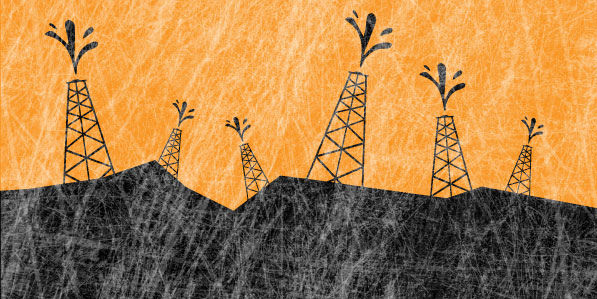The New Year began in disastrous fashion for the oil market with Brent crude touching 12 year lows in January, which followed a year to forget in 2015. Confidence in the prospects for the oil price seemed irreversibly low when the decision to lift Iranian sanctions was announced and Chinese economic growth statistics continued to paint a rather bleak picture for global growth. However, oil has undergone a swift and material recovery since bottoming out on 18 January. The bounce in sentiment has not been exclusive to oil, with iron ore, copper and coal also experiencing a surge in their respective prices. The key question from here remains: is the rise in oil sustainable, or is it little more than a short squeeze which lacks any fundamental basis?
As outlined in our ‘Multi-Asset Brief’ in January, we believed the tide was beginning to turn in oil and that Brent crude touching a low of US$27.88 per barrel in January was not justified. Since that paper’s release we have witnessed a few interesting developments, not least of which has been a tentative agreement between Saudi Arabia and Russia over a planned production cap. While the deal itself was viewed as having little impact on supply over the short term, as it was predicated on other key producers (including Iran) also capping production, it was symbolic that a deal by a Saudi-led Opec is still possible in the current environment. The oil cartel had previously refrained from limiting supply, despite the weak market conditions, preferring to keep the market oversupplied to implicitly drive out incumbent shale producers.
The much publicised end to Iranian sanctions finally came on 16 January when a nuclear deal was struck between Iran and six of the world’s western powers. There was little doubt within the market that the easing of Iranian sanctions would cause a significant uptick in oil supply, although the jury is still out on how much and how quickly Iran can increase its production to anything that resembled its pre-sanction high. Since the sanctions were lifted, the increase in Iranian output has significantly undershot consensus market expectations, driven by ageing infrastructure and lack of investment, which has reduced its capacity to increase production for the time being. The oil market has also benefited from a drop in oil production in Iraq and Nigeria, with the former experiencing the largest decline due to a stoppage in flow along a pipeline carrying oil across the Kurdish border.
In a phenomenon which began in October 2014, the US oil rig count has continued to transition lower, falling approximately 72% from its peak. At the same time, global oil capital expenditure (capex) has also decreased, with Simmons forecasting it to fall approximately 50% in 2016 which followed a similar reduction in 2015. While the fall in rig count and capex has been swift and material, the drop in US oil production has been modest in comparison, although we began to see consistent declines being recorded in February. We believe the market over anticipated the speed at which production would decline in response to the falling capex, which exacerbated the downward pressure on oil prices, as production remained stubbornly high. Nonetheless, our view is for US production to follow a similar path to the fall in rig counts for the remainder of the year and into 2017, as we believe shale producers will be reluctant to increase drilling spending with prices below their respective marginal costs of production.
A looming factor that has the potential to jeopardise the recent rally in the oil market is the historically high level of oil inventories. The above-trend level of inventories has been caused by two main factors:
- Oil supply strongly exceeding oil demand
- A steep forward curve which acts as a strong incentive to build inventories. However, recently we have seen the forward curve flatten, thus minimising the incentive to build inventories as the premium received from doing so is comparatively less. A flattening forward curve, as oil inventories are high, in the short term should see new supply come online, which theoretically threatens an already oversupplied market. While we are obviously cognisant of this risk, we believe consistently falling inventories will be supportive of a more stable oil market.
We held the view earlier in the year that an oil price at sub US$28 per barrel was not sustainable over the longer term and not in line with fundamentals. The recent recovery has been swifter than even our expectations. In light of the current uncertainty in the market, we believe the path over the short term for oil will be volatile, particularly as the threat of inventories swamping the market is very real. However, over the longer term, we are more constructive on both the stability of the market and its eventual price, as falling capital expenditure and rig counts begin to have a more pronounced impact. Similarly, the tentative agreement by Opec members to freeze production, while complex and contingent on a number of factors, is still a potential positive for controlling supply over the longer term. As for the positioning of our portfolios, we are conscious of the short-term risks that lie ahead, although we do believe there are genuine factors which are now supportive of a higher oil price.
Philip Saunders is co-Head of Multi-Asset at Investec.


